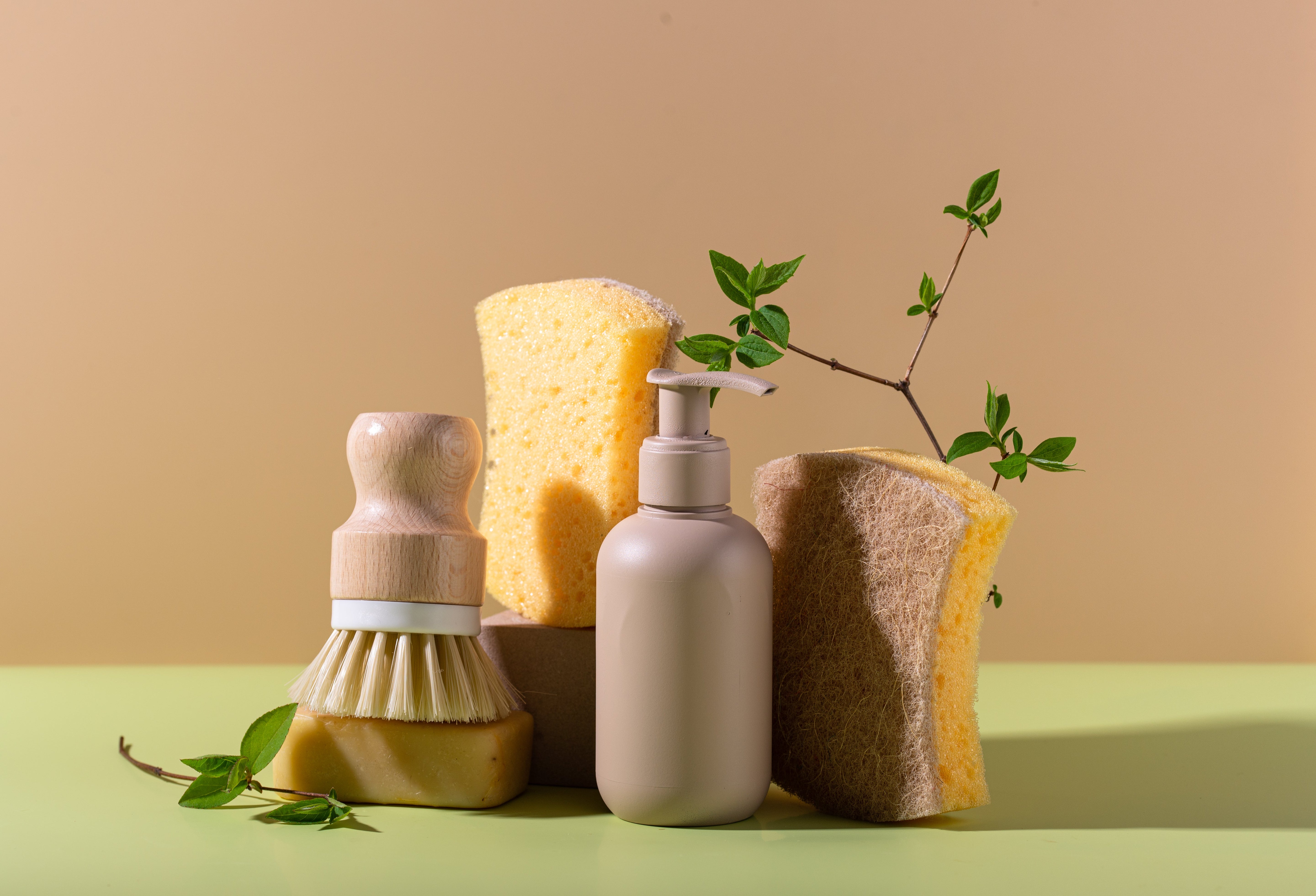
How to Read Between the Lines: Decoding Labels for Truly Toxin-Free Household Products
In today’s marketplace, where everything from dish soap to air fresheners claims to be "natural" or "eco-friendly," it's easy to feel overwhelmed. How do you know which labels to trust and which are just clever marketing? At Free Living Co., we believe clean living starts with clarity—and that means becoming fluent in the language of labels. This guide will help you confidently navigate the claims, uncover what’s really inside your household products, and understand how a toxin-free lifestyle supports long-term health, sustainability, and peace of mind.
Why Label Literacy Matters: From Buzzwords to Biology
Misleading labels do more than confuse us—they can have real impacts on our health and the environment. Studies show that exposure to common household toxins, even in small amounts, can accumulate over time and contribute to a range of health issues including endocrine disruption, immunotoxicity, and respiratory illness. According to the American Lung Association and the National Institute of Environmental Health Sciences, ingredients commonly found in "everyday" products are linked to chronic issues from asthma to hormone imbalance.
Reading between the lines is about more than skepticism—it's about self-protection and informed choice. True clean living begins with understanding what we're being exposed to and choosing transparency over trends.
Hidden Toxins: Where They Lurk and Why They Matter
Your cleaning spray, scented candle, or hand soap might seem harmless, but many conventional household products contain ingredients that are:
-
Endocrine Disruptors: Chemicals like phthalates and parabens mimic or block hormones, affecting fertility, development, and mood.
-
Neurotoxins: Ingredients such as synthetic fragrances and some solvents can impair cognitive function and contribute to headaches or anxiety.
-
Carcinogens: Compounds like formaldehyde and 1,4-dioxane have been linked to various forms of cancer.
-
Immunotoxins: These can suppress or over-activate the immune system, making the body more vulnerable to illness or allergies.
Even if your home "looks clean," the air, surfaces, and skin you're in contact with may tell a different story.
How to Decode Product Labels Like a Pro
Becoming a label-literate consumer takes practice, but it’s one of the most empowering steps you can take toward toxin-free living.
1. Flip the Package
Ignore the front-of-package claims and head straight for the ingredient list. Look for complete transparency—if a product simply says "fragrance," "cleaning agents," or "proprietary blend," that’s a red flag. Real transparency means listing everything, no exceptions.
2. Look for Red Flags
Some ingredients to steer clear of include:
-
Fragrance or Parfum (can contain hundreds of undisclosed chemicals)
-
Parabens (e.g., methylparaben, propylparaben)
-
Sodium Lauryl Sulfate (SLS) or Sodium Laureth Sulfate (SLES)
-
Triclosan (often found in antibacterial soaps)
-
Colorants with FD&C or D&C prefixes
3. Prefer Fewer Ingredients
Simple is powerful. The fewer ingredients listed, the easier it is to vet them. Products with short, familiar ingredient lists often carry fewer risks.
4. Understand Certifications
Labels like EWG Verified, USDA Organic, MADE SAFE, and Cradle to Cradle offer layers of credibility, but they shouldn't replace personal research. Use them as a starting point, not the final word.
Why It Matters: The Deeper Benefits of Non-Toxic Living
Going toxin-free isn’t just about what you remove from your routine—it’s about what you gain.
1. Improved Respiratory Health
Removing synthetic fragrances and VOCs (volatile organic compounds) from your home can significantly improve indoor air quality. This can reduce asthma flare-ups, headaches, and chronic sinus issues, especially in children and vulnerable populations.
2. Hormonal Harmony
Avoiding endocrine-disrupting chemicals can help stabilize mood, improve sleep, and support reproductive health. This is especially important for teenagers, pregnant individuals, and anyone with hormone-sensitive conditions.
3. Immune Support
Toxin-free products reduce the inflammatory burden on the body, allowing your immune system to function as it should. This may help reduce allergies, skin flare-ups, and even long-term illness susceptibility.
4. Environmental Impact
When you choose biodegradable, toxin-free formulas, you’re reducing chemical runoff into waterways, improving soil quality, and supporting a circular economy built on sustainable sourcing and packaging.
5. Mental Clarity & Emotional Ease
A toxin-free home fosters mental clarity. Clean scents from essential oils, a lack of synthetic irritants, and simple rituals with safe products can promote calm, regulate the nervous system, and improve overall emotional resilience.
Your First Swaps: A Practical, Sustainable Path
Going all-in overnight is overwhelming—and unnecessary. We recommend a "one in, one out" approach:
-
When your current product runs out, replace it with a vetted, safer alternative.
-
Prioritize high-impact categories like cleaners, hand soap, laundry detergent, and personal care items.
-
Don’t fall into the perfection trap. Progress over perfect is the clean living motto.
Examples of High-Impact Swaps:
-
Swap fragrance-heavy dish soap for Dishwashing Liquid
-
Trade laundry detergent for Laundry Detergent
-
Opt for a fragrance-free multi-surface solution and use with a Glass Spray Bottle
-
Replace chemical-laden balm with Olive Balm
Beyond the Label: Building a Trustworthy Toolkit
Ultimately, decoding product labels is just one piece of the puzzle. Choosing brands that are built on transparency, third-party testing, and sustainability completes the picture. That’s why at Free Living Co., we vet every ingredient and only carry products we trust in our own homes.
When you shop with us, you're not just buying products—you're buying peace of mind.
Frequently Asked Questions
Q: What does "chemical-free" really mean?
A: Technically, all substances are made of chemicals. But in wellness language, "chemical-free" usually refers to products free of synthetic, harmful, or toxic substances that can disrupt health or ecosystems.
Q: Are "unscented" and "fragrance-free" the same?
A: Not always. Unscented may still contain masking agents. Fragrance-free typically means no added scent chemicals—but always read the ingredient list.
Q: Do natural cleaners really work?
A: Yes. Ingredients like vinegar, baking soda, and botanical surfactants are effective and time-tested. Many non-toxic products rival or surpass conventional ones in performance.
Q: How can I check a product's safety?
A: Use tools like the EWG Skin Deep Database or the Think Dirty app. Or, make it easy by shopping vetted selections at FreeLivingCo.co.
Q: Where should I begin if I'm new to clean living?
A: Start small. Focus on daily-use products, and use the "one in, one out" approach. Dish soap, laundry detergent, and hand soap are great first steps.
Clean living starts with clean labels. Be informed. Be empowered. Be toxin-free.


Leave a comment
This site is protected by hCaptcha and the hCaptcha Privacy Policy and Terms of Service apply.